Aviation has always been a realm of daring innovation, where engineers and designers continuously strive to push the boundaries of what’s possible in flight. Throughout history, unique plane designs have emerged, defying convention and offering glimpses into the future of aviation. In this comprehensive article, we embark on a detailed journey through time, exploring five of the boldest and most revolutionary aircraft that have graced the skies with their unconventional brilliance. From flying pancakes to delta-wing marvels, these groundbreaking designs have left an indelible mark on the aviation world.
The Vought V-173 “Flying Pancake”
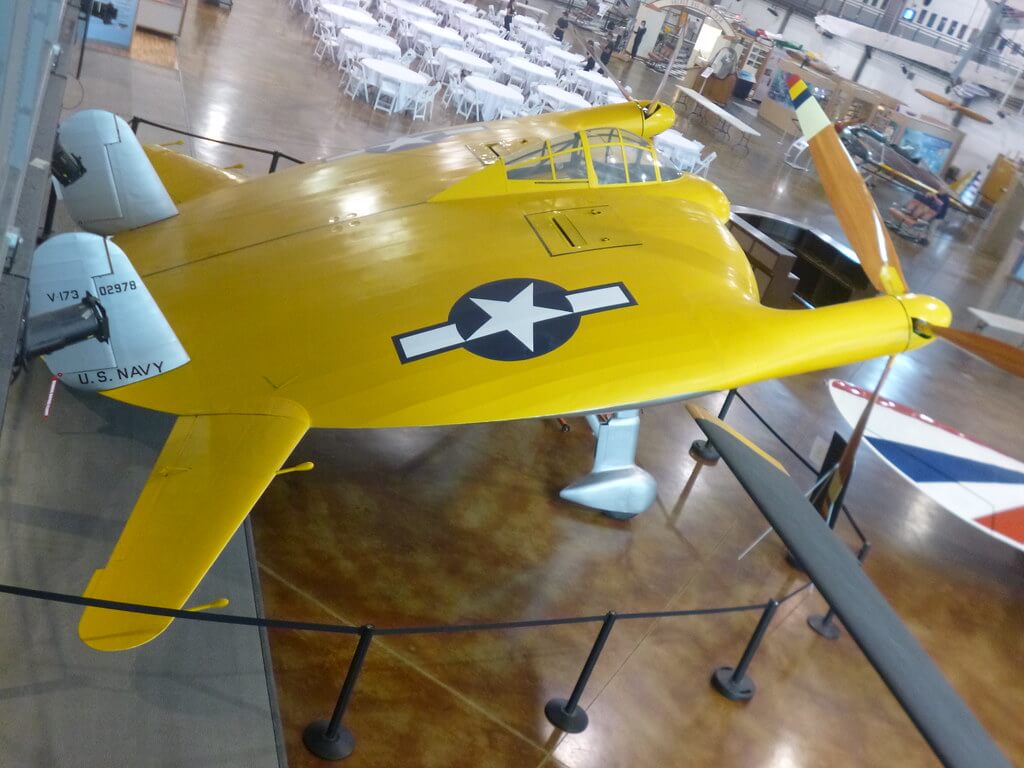
The Vought V-173, affectionately known as the “Flying Pancake,” soared into the spotlight during World War II. Conceived as an experimental aircraft to tackle the challenges of carrier landings, the V-173’s unique disc-like wing design stood in stark contrast to the conventional aircraft of the era. The unconventional shape was intended to provide exceptional stability at low speeds, a critical factor for safe naval aviation operations.
The Flying Pancake’s innovative wing design was the brainchild of Charles H. Zimmerman, an aeronautical engineer known for his radical ideas. The aircraft featured a circular wing, thick in the center and tapering towards the edges, resembling the shape of a pancake. Two propellers mounted on the wingtips powered the aircraft, driving it forward.
In 1942, the V-173 successfully took to the skies, and its flight tests revealed impressive stability and maneuverability. However, despite the undeniable ingenuity of its design, the V-173 never progressed beyond the prototype stage. The U.S. Navy favored more conventional aircraft, and the Vought F4U Corsair, a conventional fighter, was preferred for carrier operations.
Nonetheless, the V-173’s contributions to future aircraft development cannot be understated. The aerodynamic lessons learned from the Flying Pancake’s shape greatly influenced the development of subsequent aircraft. Zimmerman’s work laid the foundation for the development of future tailless and blended-wing-body aircraft, including the successful Northrop Grumman B-2 Spirit stealth bomber.
The Horten Ho 229 “Flying Wing”
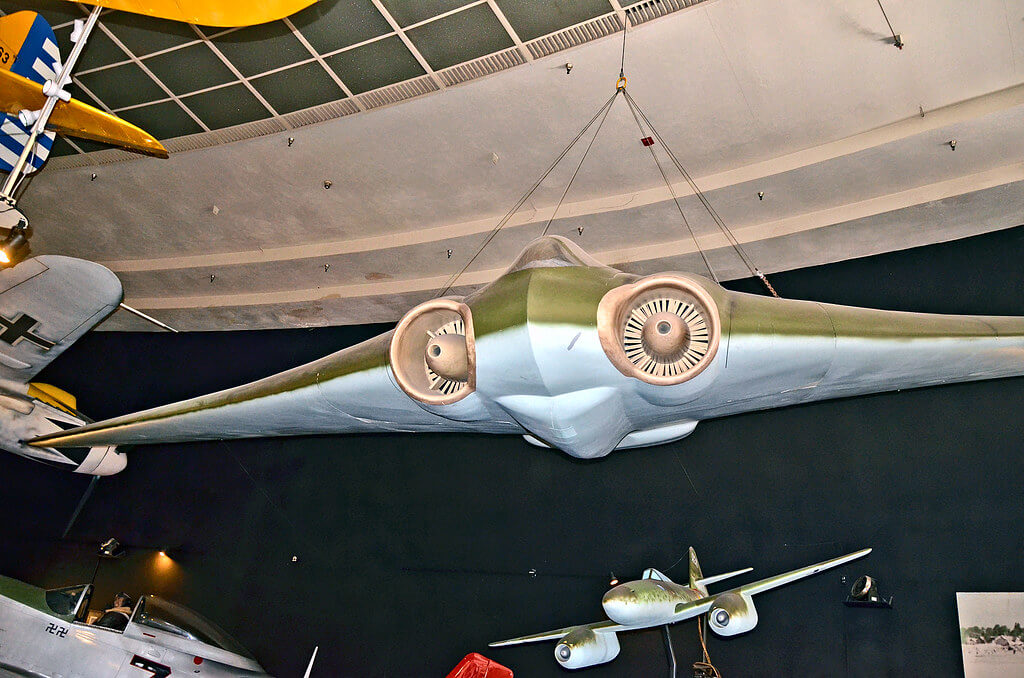
Fast-forward to World War II Germany, where the Horten Ho 229, a revolutionary “flying wing” aircraft, was born. Designed by the Horten brothers, Reimar and Walter, the Ho 229 featured a distinctive all-wing structure, omitting a conventional fuselage altogether. This radical design aimed to reduce drag and enhance fuel efficiency, pushing the boundaries of what was considered possible in aviation during that era.
The Horten brothers’ vision was driven by their belief in the inherent advantages of the flying wing concept. By eliminating the fuselage and integrating the wings seamlessly, they aimed to create an aircraft that not only offered reduced drag but also superior stealth characteristics, making it challenging to detect by enemy radar.
In 1944, the Ho 229 made its first powered flight, and its performance exceeded expectations. The aircraft showcased excellent speed and stability, validating the viability of the flying wing design. However, Ho 229’s development was impeded by the challenges of the war, and it never saw active service.
Decades later, the flying wing concept resurfaced with the Northrop Grumman B-2 Spirit stealth bomber. Introduced in the 1990s, the B-2 Spirit remains one of the most advanced and enigmatic aircraft in the world. Its sleek profile, radar-evading capabilities, and groundbreaking design all owe their roots to the daring vision of the Horten Ho 229.
Convair XF-92
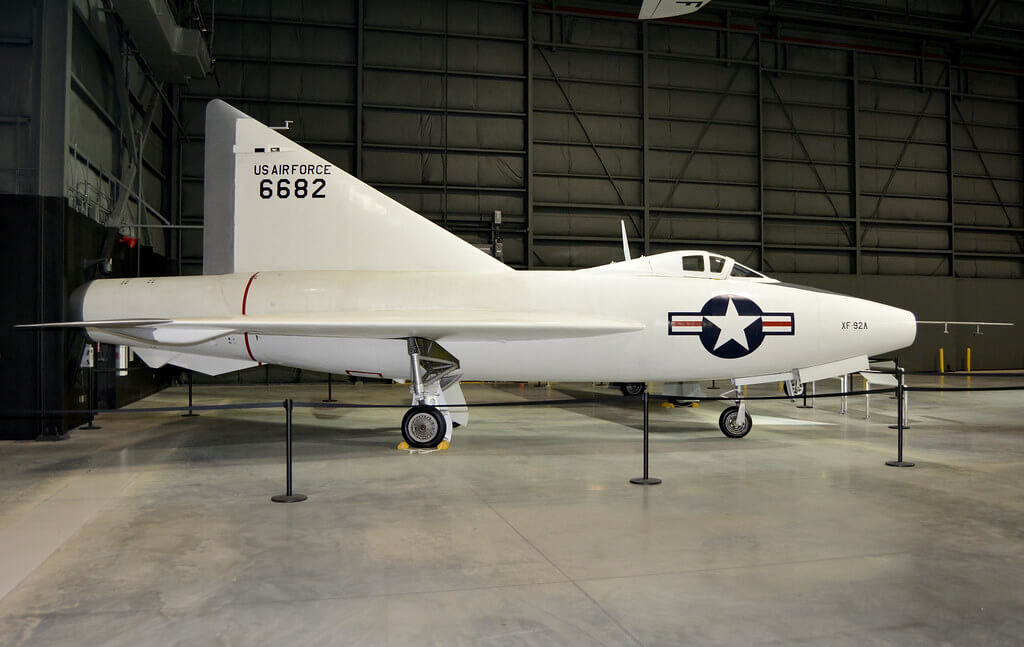
In the early 1950s, the Convair XF-92 took to the skies, marking one of the first successful flights of an American delta-wing aircraft. The XF-92 was developed as part of a U.S. Air Force project to explore the feasibility of delta-wing configurations for high-speed flight, especially in the supersonic regime.
The aircraft featured a triangular-shaped wing design, setting it apart from traditional straight-wing aircraft prevalent at the time. The delta-wing design held the promise of improved stability at high speeds, a crucial aspect for supersonic flight, and offered greater lift efficiency.
The XF-92’s maiden flight in 1948 revealed some handling issues, but subsequent modifications and improvements led to better performance. Although the XF-92 never advanced beyond the prototype phase, its delta-wing concept captured the attention of aircraft designers worldwide.
Convair’s work on the XF-92 laid the groundwork for future delta-wing aircraft, including the iconic Convair F-102 Delta Dagger and the Convair B-58 Hustler bomber. These aircraft played essential roles in the United States Air Force during the Cold War era, highlighting the significant impact of the XF-92’s pioneering delta-wing design.
Lockheed Martin F-35B “STOVL”
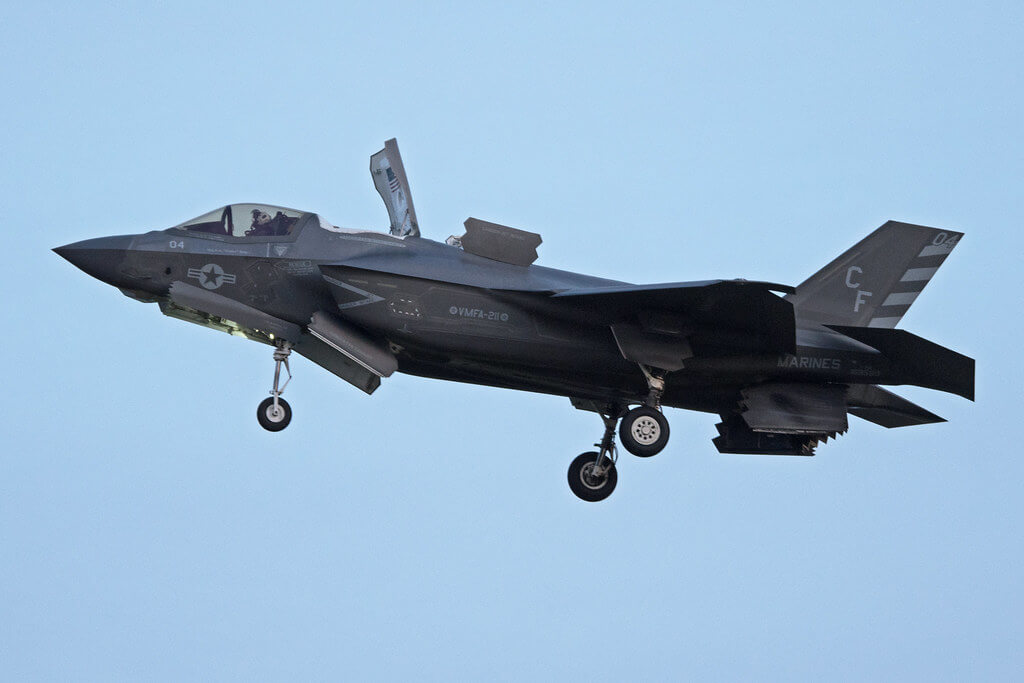
As we fast forward to modern times, we encounter the Lockheed Martin F-35B, a marvel of contemporary engineering and design. The F-35B is a variant of the fifth-generation F-35 Lightning II fighter jet, and its STOVL capabilities set it apart as one of the most unique plane designs in the history of aviation.
The concept of Short Takeoff and Vertical Landing (STOVL) aircraft is not new, but the F-35B takes it to new heights with cutting-edge technology and engineering. The aircraft’s capability to take off and land vertically enables it to operate from a wide range of locations, including short runways and small aircraft carriers. This flexibility provides significant advantages in terms of mission planning and execution.
To achieve STOVL capabilities, the F-35B is equipped with innovative lift-fan propulsion and swiveling jet nozzles. The lift fan, located behind the cockpit, provides the upward thrust required for vertical takeoffs, while the swiveling nozzles redirect engine thrust downward during vertical landings. These features allow the aircraft to hover in mid-air, defying gravity and expanding its operational flexibility.
The F-35B’s unique plane design required groundbreaking engineering and integration of advanced technologies, making it one of the most sophisticated military aircraft in history. Its multi-role capabilities and exceptional performance have made it a game-changer in modern aerial warfare.
Beriev Be-200
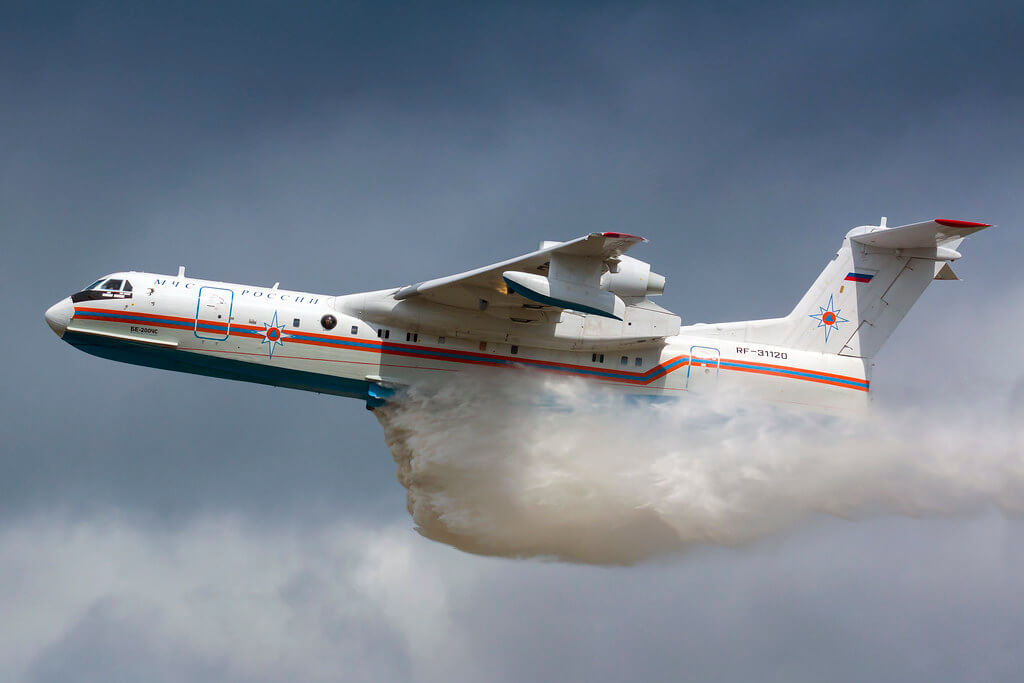
Venturing into the world of amphibious aircraft, we encounter the Beriev Be-200, a versatile Russian marvel designed for firefighting, search and rescue, and maritime patrol missions. The Be-200’s unique design allows it to take off and land on both conventional runways and bodies of water, making it a highly adaptable aircraft for various missions.
The Be-200’s development began in the early 1980s, with the goal of creating a multipurpose aircraft capable of addressing diverse operational requirements. Its amphibious capabilities enable it to land on water bodies like lakes, rivers, and seas, opening up new possibilities for firefighting and rescue missions in areas with limited infrastructure.
When tasked with firefighting duties, the Be-200 displays its prowess by performing water-scooping operations. It can land on the water’s surface, open its belly, and quickly refill its onboard water tanks. This allows it to rapidly deploy water to combat wildfires, significantly enhancing firefighting efficiency.
Furthermore, the aircraft’s spacious cabin can be reconfigured for search and rescue missions or maritime patrol duties. Its versatility and range of operations have made it a favorite among operators in regions with vast stretches of water and challenging terrains.
Conclusion
In the boundless skies of aviation, creative minds have birthed ingenious aircraft designs that have revolutionized the industry and paved the way for future innovations. From the daring Vought V-173 “Flying Pancake” of World War II to the cutting-edge Lockheed Martin F-35B with its STOVL capabilities, these unique plane designs continue to inspire awe and drive progress in aviation.
As we celebrate these remarkable achievements, we also look to the future with anticipation. The aviation industry remains a hotbed of innovation, where the boldest ideas are yet to take flight. Whether it’s advancements in electric propulsion, sustainable air travel, or the emergence of unmanned aerial vehicles, the quest for unique and groundbreaking aircraft designs continues to soar ever higher, guided by the unyielding spirit of human ingenuity. The sky’s limit is yet to be reached, and the next generation of visionary aircraft designers will undoubtedly leave their mark on the heavens above.